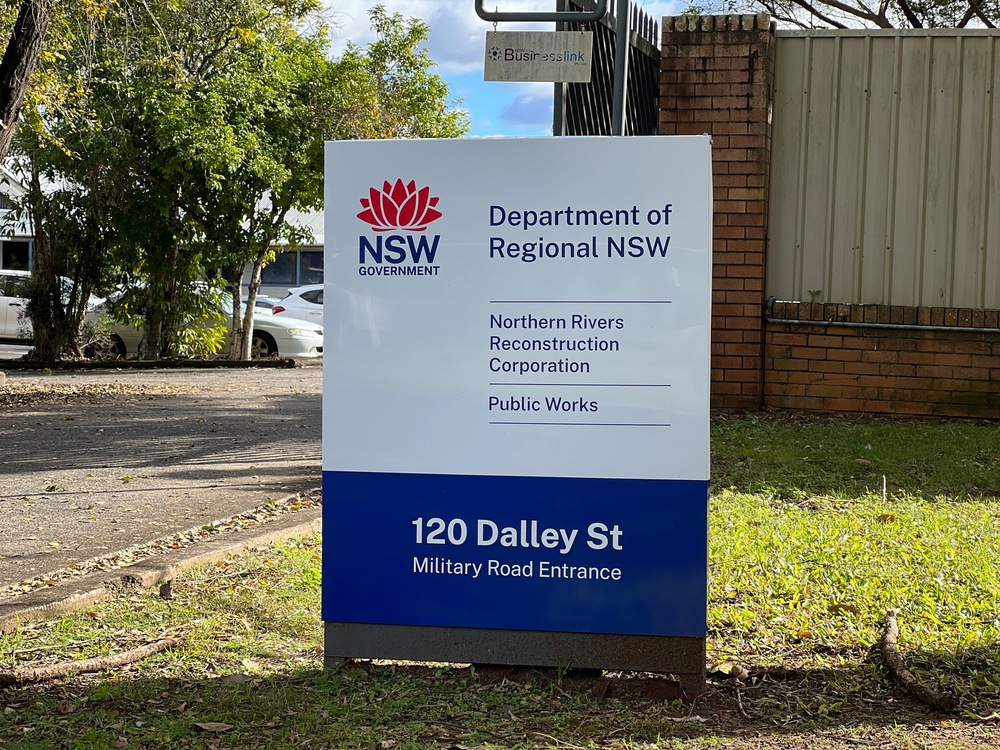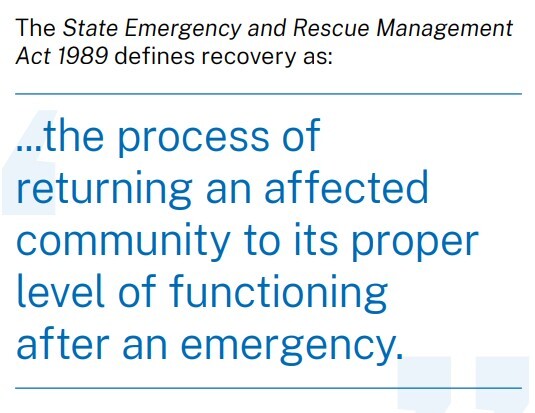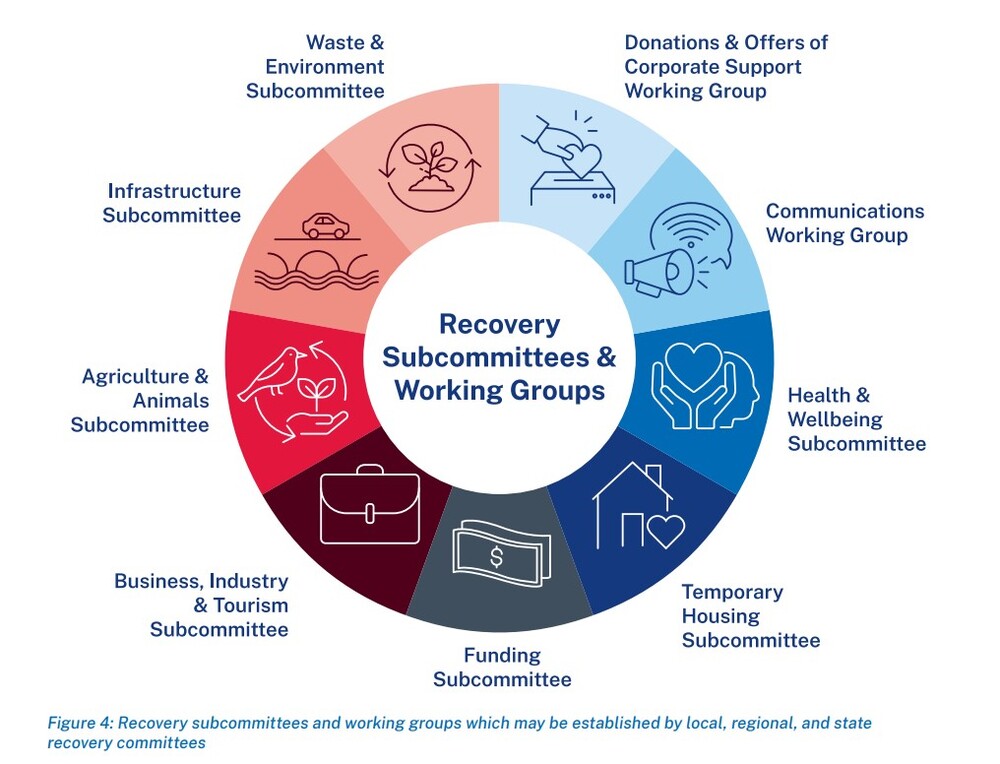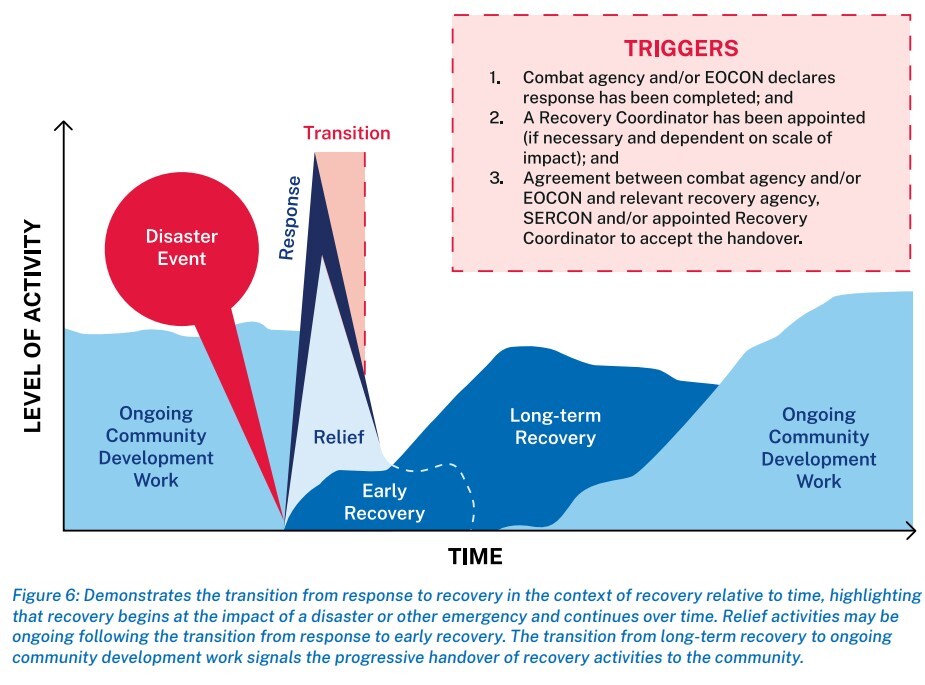Flood Readiness: Are We Better Prepared? Part 11 the State Government & NSW RA
Lara Leahy
03 May 2024, 9:01 PM
 The artwork is called Healing Together by Monique Rennie, a proud Kamillaroi woman. Read more in the article.
The artwork is called Healing Together by Monique Rennie, a proud Kamillaroi woman. Read more in the article.As our Flood Readiness - Are We Better Prepared series comes to an end, we cover the remaining key organisations that play a vital role in pre-flood warnings and in the rescue & recovery after a major flood. We are asking those organisations to let us know how the 2022 floods and Flood Inquiry have changed their procedures and processes so people will experience better outcomes.
So we know what to expect when the unexpected happens next.
Today, we look at the NSW State Government including the NSW Reconstruction Authority.
***
One of the largest aspects of the flood in Lismore, besides the shocking height which the flood measured, is the recovery. From early on, the State Government were involved with the coordination and distribution of assets, and the formation of a lasting entity to see us through the long haul. We started with the Northern Rivers Reconstruction Corporation (NRRC) before more severe weather events across the state saw the birth of the NSW Reconstruction Authority. But neither was in existence when the initial February 28 2022 flood response played out.

Let's face it, there was a lot of scrambling about what to do with a natural disaster the size of the 2022 floods. There was some input from the Federal Government with assistance from our Defence Forces, councils trying to lift loads way too heavy for them and a LOT of charity work from inside and outside the Northern Rivers to help keep the community spirit and strength to rebuild.
Our NSW State Government has concentrated on two of the biggest challenges in regard to severe weather events that affect emergency situations;
- How can we mitigate issues prior to a severe weather event?
- What happens when the emergency abates? The aftermath.
Both of these points really hit home when you think that since 2019, NSW has “endured 65 declared disasters, costing the government more than $6 billion, with more than 20,000 homes damaged in 2022 alone.” The RA is currently working with 8 areas in recovery. Predictions state that “New research shows the cost of disasters will hit $9.1 billion per year by 2060 in damages to homes and infrastructure if action is not taken.” Quotes taken from the State Disaster Mitigation Plan overview.

The nine natural hazards being considered in our State Mitigation Plan
We asked the NSW State Government and the NSW Reconstruction Authority a little more about how things unfolded at their end and a spokesperson for the NSW Government provided us with the following:
Flood Inquiry
“In line with the findings and recommendations of the 2022 Independent Flood Inquiry, the NSW Reconstruction Authority (RA) was established in 2022 to take on responsibility for disaster preparedness and prevention, and for reconstruction and recovery following disasters and other emergencies. The NSW Reconstruction Authority Act 2022 sets out the functions for the new Authority.
“The RA released the nation’s first-ever State Disaster Mitigation Plan (SDMP) in late February and is now progressing Regional Disaster Adaptation Plans for the Northern Rivers, Hawkesbury-Nepean Valley and the Central West regions. These regions were among the hardest hit by the 2022 floods.”
Northern Rivers
“The NSW Flood Inquiry also made a specific recommendation about relocating communities most at risk. That’s been a key priority for the $700m Resilient Homes Program and the $100m Resilient Lands Program in the Northern Rivers.

“About 1,100 homes will be prioritised for a buyback under the Resilient Homes Program and 370 for a raising or retrofit.
“As of April 26, 760 buyback offers had been approved and 607 buyback offers had been accepted. In addition, Home Assessments are being carried out for the home raising and retrofits stream, with four raising and retrofit offers approved and three raising and retrofit offers completed. More than 370 homeowners in the Northern Rivers are prioritised and are now receiving tailored assessments to make their homes more resilient against flooding.
“Homeowners are already actively progressing work, with a number of DAs lodged through council. We’re ready to support these homeowners through the next steps of what is a highly technical process and like any construction project, this will take time to complete. In addition to those completed raises and retrofits, around 12 eligible homeowners have already completed their own raises or retrofits and we’re now working with these people to reimburse them.
“Buyback recipients will be given priority to relocate off the floodplain under the Resilient Lands Program. Two sites have been identified so far under the Resilient Lands Program, 400 lots at East Lismore and up to 50 households at Mount Pleasant (in Goonellabah) with more sites expected to be announced in 2024.
“The RA is also doing a great amount of work to implement one of the Flood Inquiry’s other recommendations - to minimise disruptions to essential services and floodplain infrastructure. This includes improvements to evacuation routes, upgrading and replacing flood pumps and improving drainage are among a list of 36 projects under the $150 million Northern Rivers Recovery and Resilience Program (NRRRP).
“Upgrading the East Lismore Sewage Treatment Plant under the $145 million Northern Rivers Flood Recovery Repair Water and Wastewater Program is another example of the Government implementing this specific recommendation of the NSW Flood Inquiry.”

Preparedness
“The RA has a strong focus on recovery, but our experience tells us it’s not just how we respond, but how we prepare, that will make the difference. In 2023, the RA launched the Get Ready NSW website, which is helping households across NSW take the guesswork out of planning for natural disasters.
“Get Ready NSW was designed in partnership between the NSW Reconstruction Authority and NSW Department of Customer Service, in consultation with emergency services, and covers a range of scenarios, including:
- Understanding bushfire risk
- Preparing homes for a bushfire season
- Preparing businesses for a bushfire
- Managing pets and livestock
- How to find evacuation centres
- Understanding storm risk
- Preparing homes for a storm
- Information on heatwaves
- Finding support if you are impacted by natural disasters.
“Households will also find valuable evacuation advice on Get Ready NSW, including how to create a digital ‘grab bag’ to make accessing important information easier during the recovery process.
“This year, the RA is planning to roll out a statewide Get Ready NSW campaign.
“The RA is also establishing a dedicated Preparedness team, which will focus on delivering actions out of the SDMP, supporting and enabling communities to be better prepared, as well as facilitating collaboration and coordination between government agencies, local councils, service providers and communities to improve disaster preparedness.”
If you would like more information about what the State Government is doing, read the full State Disaster Mitigation Plan and the NSW Recovery Plan.

News Title Image
The cover image is artwork from the NSW Recovery Plan called ‘Healing Together.’ The artist is Monique Rennie, a proud Kamillaroi woman living on Wonnarua country in the NSW Upper Hunter. It illustrates organisations and communities joining together to find the strength to recover and rebuild after a natural disaster or significant event. At the centre of the artwork sits our communities and organisations coming together to discuss ways to recover. The artwork features gum leaves branching in from the corners and embracing the communities, providing their healing and growing together.
Around the artwork are lemon myrtle blooms healing the families in their centre and grass tree flowers representing the flourishing that can happen after hardship.
Other stories in this series includes:
Part 1: Essential Energy
Part 2: Communications - Telstra and Optus
Part 2: Communications - TPG Telecom and nbn
Part 3: Police and Fire + Rescue
Part 4: Critical Flood Information
Part 5: Animals
Part 6: Federal Government
Part 7: Charities
Part 8: Local Government
Part 9: SES / RFS
Part 10: Health

